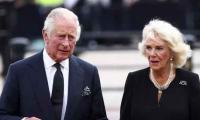Thousand Oaks, California: a city torn apart by wildfire and gunfire. Both are unnatural disasters.
“This is the new abnormal,” Gov Jerry Brown said this week at a press conference, talking about global warming and the three voracious fires that are tearing up his state, one of them – the Camp Fire, in Northern California – the deadliest and most destructive in the state’s history.
“Unfortunately, the best science is telling us that dryness, warmth, drought, all those things, they’re going to intensify,” Brown said.
In Thousand Oaks, northwest of Los Angeles, the new abnormal met the new abnormal. On Nov 7, a gunman entered the Borderline Bar and Grill in that city and started shooting, killing 11 patrons and a police officer. He then shot himself. Several of the patrons, including one of the victims, had survived the mass shooting a year earlier at a Las Vegas concert.
There was no time to grieve. A day later, as the Washington Post reported, “catastrophic twin blazes had formed a ring of fire around this Southern California community. The second tragedy of the week had somehow dwarfed the first.” Thousands of people were forced to evacuate their homes.
Gunfire and wildfire. This is a country at war with itself in multiple ways.
The shooter, Ian David Long – described, of course, as a troubled loner – was a former Marine who had been deployed in Afghanistan. Is there a relationship between the shooting at the Borderline Bar and Grill and the fact that Long had been trained as a machine-gunner?
The American mainstream media are far more willing, it seems, to acknowledge a relationship between human activity and climate change, including the increasing intensity of natural disasters, such as hurricanes and wildfires, than they are willing to acknowledge a relationship between killing abroad, which is called war, and killing at home, which is called murder.
A New York Times story in the wake of the shootings, however, wades into the complexity of this relationship.
Reporters interviewed a number of his fellow Marines. One of them, utterly shocked by what happened, said: “He was a really good guy. He gave me the Bible I still carry today.” But he added: “We were trained as machine-gunners, so you know you are capable of doing something like this. But that he did it makes no sense. It is against all our values.”
Presumably the violated values concern the killing of Americans, which, I fear, is a precarious distinction.
The Times story also informed us that Long’s battalion “saw little action” during his deployment in Afghanistan, pointing out, without comment or further context: “The only casualty in the battalion died by suicide after being hazed by other Marines.”
Wait, what?
This bit of data may have absolutely nothing to do with the mass shooting spree in Thousand Oaks, but it seems to say something about values as defined by the military and reported by the media.
When life itself isn’t sacrosanct – when the taking of it is allowed to serve tactical and strategic purposes – values can quickly crumble. Killing people, at the very least, becomes no big deal. Sometimes it’s even, you know, necessary.
A Marine is ‘hazed’ by fellow Marines and commits suicide. The awfulness of this resonated for me partly because it was reported with such a shrug, worth half a sentence. (The Times did, however, link to a longer story about the incident.)
Here’s another quote from the story, from someone who served with Long: “I’m not surprised someone I knew ended up doing a mass shooting. We had another guy recently committed suicide by cops in Texas. Guys struggle. We’ve lost more Marines in our peer group to suicide than we ever lost in Afghanistan.”
This article has been excerpted from: ‘Gunfire and Wildfire: The New Abnormal’.
Courtesy: Commondreams.org
People of that time believed that an eclipse was a symbol of displeasure of gods
Vertically speaking, dominance of domestic debt in Pakistan’s debt portfolio is haunting
Loss of biodiversity is stark reminder that urban mismanagement is not just infrastructural failure but ecological...
Strong public warning systems can also help ensure quick evacuations in places prone to fires
PPPs in Pakistan's WASH sector face significant regulatory and policy challenges that hinder their effectiveness
Instead, it would have powerful chairman with three-year term, appointed at prime minister’s discretion







